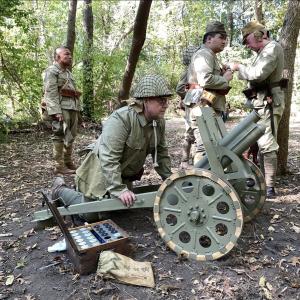
Nazis on Meth
During World War II, Nazi Germany implemented one of the most extensive and deliberate drug programs in modern military history, relying heavily on methamphetamine to enhance the performance of its soldiers. Methamphetamine was first synthesised in Japan in 1893, but it wasn’t until a German pharmaceutical company began mass-producing it in 1938 under the name Pervitin that the drug became widely accessible and was turned into a tool of war by the Nazi regime.
Initially marketed as a miracle medication, Pervitin was praised for its ability to keep users awake, suppress hunger, and boost self-confidence. It was sold legally in German pharmacies and was even incorporated into everyday items like chocolates and chewing gum. Civilians and soldiers alike used the drug, but it was the military that fully realised and exploited its potential. German military doctors, faced with the challenges of maintaining troop endurance during rapid offensives, saw methamphetamine as a solution to exhaustion, fear, and hesitation among soldiers. As the country prepared to launch its new strategy of fast, aggressive warfare, a stimulant that could keep men awake and hyper-alert for days became invaluable.
Methamphetamine use in the German army began in earnest during the invasion of Poland in 1939 and escalated during the 1940 offensive in Western Europe. German forces were advancing rapidly, often covering great distances without rest. To maintain this pace, the army distributed tens of millions of Pervitin tablets to infantry, tank crews, pilots, and even officers. During the Battle of France, around 35 million tablets were handed out. These came in small boxes, and the military issued dosing instructions, although in practice soldiers often took more than the recommended amount. Field commanders were given discretion over distribution, and methamphetamine became a staple part of the army’s logistical planning.
Pilots in the air force were also provided with stimulant tablets to keep them awake and focused during long bombing raids. The belief was that methamphetamine would enhance reaction time and reduce the mental strain of flying under stressful conditions. In these early stages, the drug was seen as a technological advancement—almost like a chemical weapon against human weakness. Troops who took it stayed awake for days, marched or drove long distances without rest, and attacked with surprising speed and energy. Their mental clarity and emotional detachment made them effective fighters in short, intense bursts of combat.
However, the short-term advantages came with significant long-term costs. While soldiers initially experienced increased energy and euphoria, repeated use often led to crashes, hallucinations, paranoia, and violent behavior. Some soldiers became addicted, and others suffered mental breakdowns in the field. In the later years of the war, the German high command began to notice these side effects and attempted to regulate the drug’s use more strictly. By 1941, doctors were observing a range of psychological and physical consequences in troops who had relied too heavily on stimulants during early campaigns. In response, military medical authorities attempted to replace Pervitin with milder stimulants, but methamphetamine remained in use among some units until the end of the war.
The Nazi reliance on methamphetamine stands as one of the most systematic uses of chemical enhancement in modern warfare. It contributed to the early successes of the German military, particularly in the Blitzkrieg campaigns, by allowing soldiers to maintain aggressive momentum through exhaustion and fear. Yet it also highlighted the dangers of depending on pharmacological aids in war. Many soldiers paid a personal cost in the form of long-term psychological trauma, addiction, and physical health decline.
In retrospect, the use of methamphetamine by Nazi Germany was a disturbing fusion of medical science and military ambition. It exemplified the regime’s willingness to use any means necessary to pursue victory, regardless of the long-term consequences for individual soldiers. Though other countries also experimented with stimulants during the war, Germany’s program was unique in its scale and institutional support. It offers a cautionary tale about the limits of chemically-enhanced performance and the human cost of trying to outpace natural endurance with artificial means.










